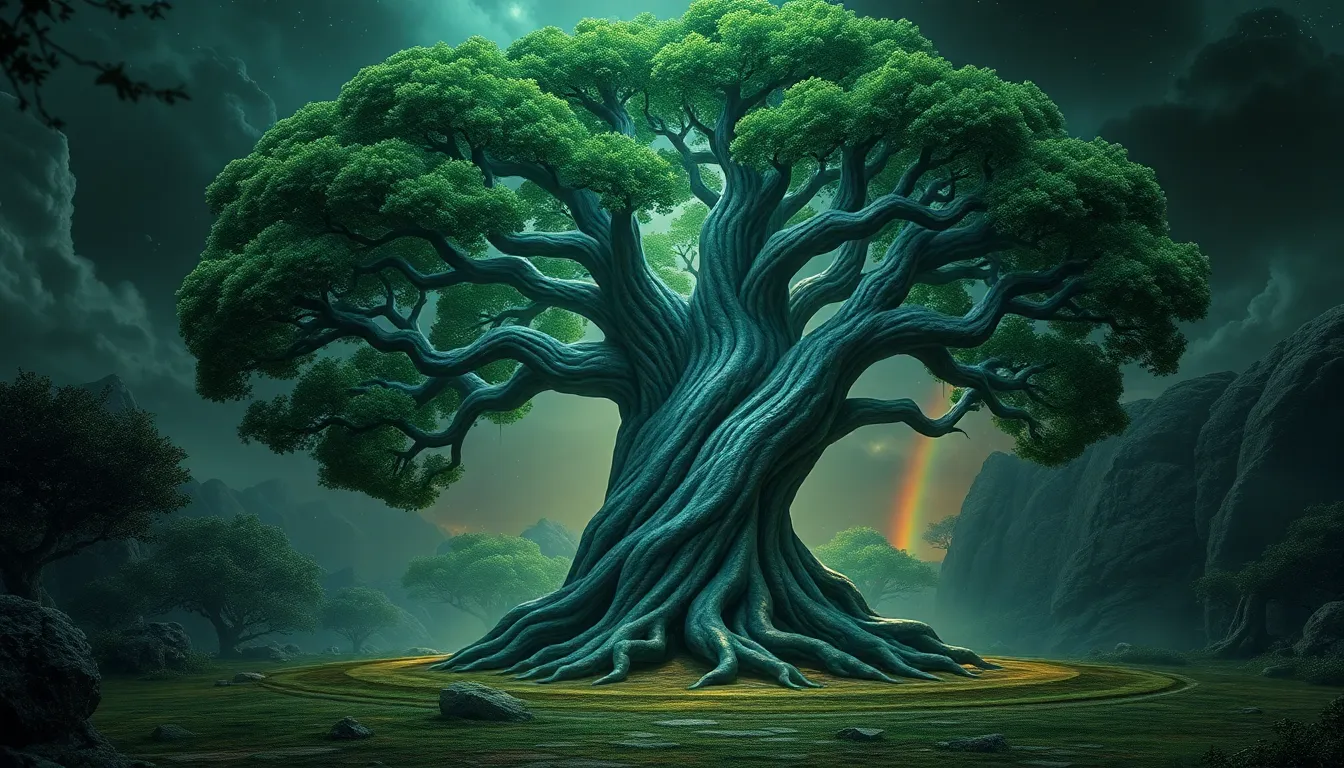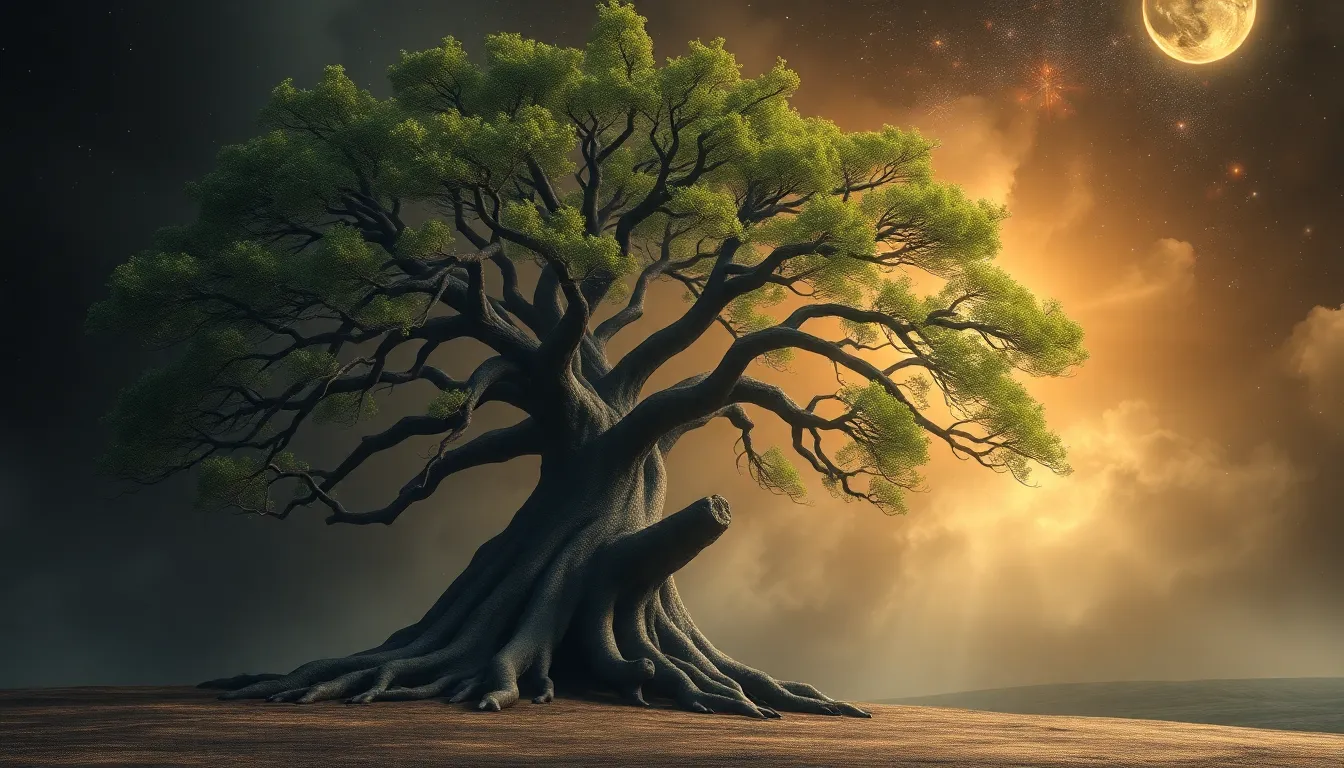The Tree of the Ancients: Myths of Time and Memory
1. Introduction to the Tree of the Ancients
The Tree of the Ancients is a powerful symbol found in various mythologies across the globe. Often depicted as a massive, ancient tree, it embodies the interconnectedness of all life and the passage of time. This tree serves not only as a physical representation of nature but also as a metaphor for memory and history, holding the collective experiences of generations.
In many cultures, the Tree of the Ancients symbolizes the roots of wisdom, where the past intertwines with the present and future. This concept is significant as it reflects humanity’s enduring quest to understand its origins and the memories that shape its identity.
2. The Symbolism of Trees in Mythology
Trees have been revered in various civilizations for their life-giving properties and their roles in the ecosystem. They symbolize growth, strength, and wisdom, making them central figures in many mythological narratives. The universal symbolism of trees can be categorized as follows:
- Growth: Trees are often seen as symbols of growth and renewal, reflecting the cycles of life.
- Wisdom: Many myths attribute wisdom to trees, suggesting they hold ancient knowledge.
- Life Cycles: Trees represent the continuity of life, bridging generations.
For example, Yggdrasil in Norse mythology is a cosmic tree that connects the nine worlds, representing the interconnectedness of all existence. In Buddhism, the Bodhi Tree is where Siddhartha attained enlightenment, symbolizing spiritual awakening. Similarly, the World Tree in Mesoamerican cultures embodies life, death, and rebirth, illustrating the cyclical nature of existence.
3. Time as a Fluid Concept in Ancient Myths
In ancient beliefs, time is often viewed as a non-linear and fluid concept, challenging the modern understanding of time as a strict progression. Many myths depict time in cyclical terms, where events repeat and historical narratives are revisited.
For instance, in Hindu cosmology, time is divided into vast cycles called Yugas, which represent an endless loop of creation and destruction. This cyclical view of time emphasizes the importance of memory in shaping historical narratives, allowing societies to understand their past while anticipating their future.
4. Memory as a Cultural Construct
Memory plays a crucial role in the construction of culture and identity. In ancient texts and oral traditions, memory is often represented through storytelling, preserving the collective experiences of a community.
Key examples include:
- The Epic of Gilgamesh: This ancient Mesopotamian text explores themes of mortality and the quest for eternal life, emphasizing the importance of remembering one’s heritage.
- Greek Mythology: Myths often recount heroic tales that shape Greek identity, with memory serving as a bridge between the past and present.
- Indigenous Narratives: Many indigenous cultures use oral storytelling to pass down histories, emphasizing the role of memory in maintaining cultural integrity.
5. The Tree of Life and Its Connection to Memory
The Tree of Life is a prominent symbol in various mythologies, representing the interconnection of all living beings and the continuity of life. This tree often embodies themes of life, death, and memory.
In many narratives, the Tree of Life is seen as a source of wisdom and ancestral knowledge. Its roots reach deep into the earth, symbolizing the foundation of life and memory, while its branches stretch into the sky, representing aspirations and future generations.
6. Myths of Creation and the Role of the Ancients
Creation myths often involve trees and nature, reflecting societal values and beliefs about existence, time, and memory. These myths serve to explain the origins of the world and humanity’s place within it.
For instance, in various Indigenous cultures, the creation story often begins with a great tree or a cosmic tree that brings forth life. Such myths highlight the importance of nature in shaping cultural identity and values, illustrating a deep connection to the environment.
Comparative analysis of these stories reveals commonalities, such as the emergence of life from chaos, the role of divine beings, and the cyclical nature of existence.
7. The Guardians of Memory: Ancestors and Spirits
In many cultures, ancestors play a vital role in preserving memory through mythology. They are often seen as guardians of history, ensuring that the experiences of the past are remembered and honored.
Spirits associated with trees are frequently depicted as custodians of tradition, embodying the wisdom of those who came before. Rituals and practices surrounding these spirits emphasize the importance of honoring ancestral memory, reinforcing the connection between the past and present.
8. The Tree in Art and Literature
The depiction of trees in ancient art and literature reflects the profound impact of these symbols on human thought. Artists and writers have long used trees to convey complex concepts of time and memory.
For example, ancient carvings often illustrate trees as central figures in creation myths, while poems and stories use trees as metaphors for growth and change. Modern interpretations continue to draw on these rich symbols, highlighting their relevance in contemporary discussions about nature and identity.
9. The Tree of the Ancients in Contemporary Culture
The influence of ancient myths on contemporary storytelling is evident in various media. The resurgence of interest in nature and memory reflects a growing awareness of the interconnectedness of all life.
Examples from literature, film, and visual arts demonstrate how the Tree of the Ancients continues to resonate with modern audiences. Works that explore themes of ancestry, memory, and the environment often draw inspiration from these age-old narratives.
10. Conclusion: The Enduring Legacy of the Tree of the Ancients
The Tree of the Ancients stands as a powerful symbol of time and memory, bridging the gap between the past and present. Its representation in mythology underscores the importance of understanding our roots and the collective experiences that shape our identities.
As we navigate the complexities of modern life, the lessons embedded in these ancient narratives remind us of the significance of memory, the interconnectedness of all beings, and the enduring wisdom of our ancestors.




